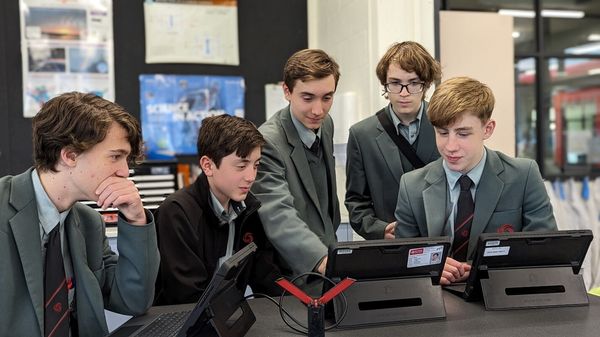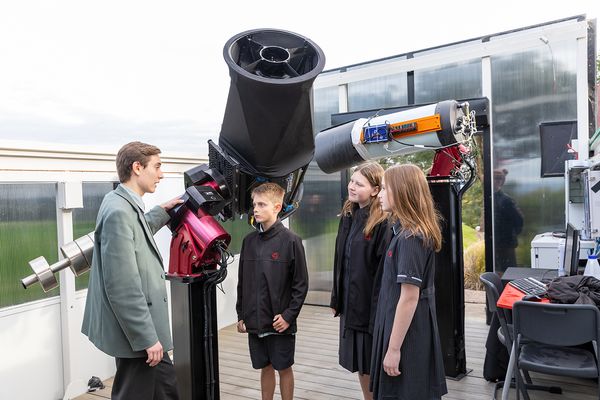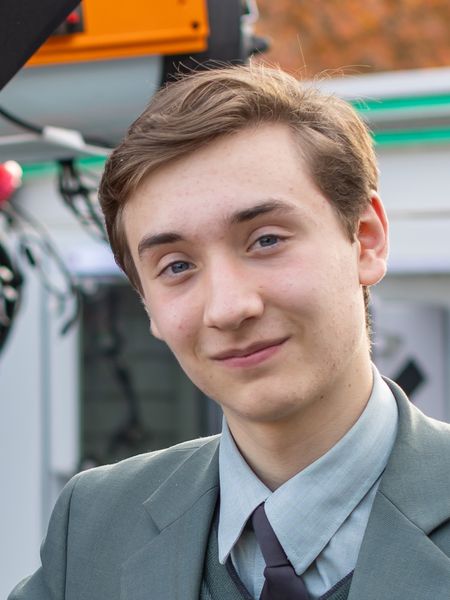Student Discovers Variable Stars
Year 10 student Tristan Wood has published research on variable stars in a peer-reviewed scientific journal.
Together with others in the ELTHAM College community, including alumni Nathan Taulelei, mentors Andrew Yen and Lindsay Vander Pal, and “resident astronomer” Michael Fitzgerald, Tristan has been using the telescopes at ELTHAM College to discover five variable stars previously unknown to science. Congratulations Tristan!
Tristan continues to use the ELTHAM College observatory on an almost nightly basis, and his passion for astronomy and discovery is infectious. Following Tristan’s lead, a group of eager students meet weekly in the co-curricular Cosmos Club to continue to search for variable stars, exoplanets, supernovae and other celestial phenomena.

Students meet in Cosmos Club to continue their search for variable stars, exoplanets, supernovae and other celestial phenomena.
You can find Tristan’s published article online in the Journal of the American Association of Variable Star Observers.
The 23rd of July 2020. It was the day I turned 12 and that evening I watched the movie Interstellar, a 2014 film directed by Christopher Nolan, for the first time. For those of you who don’t know it, the film follows astronaut Cooper played by actor Mathew McConaughey as he tries to save humanity from an Earth embroiled in catastrophic blight and famine. The journey takes Cooper and other astronauts through a wormhole near Saturn to an entirely new solar system in search of a new home for humankind. I remember sitting outside afterwards and just staring up at the stars, hours passing as the stars just moved in front of my eyes. Interstellar opened my eyes to what astronomy could one day be – in a very science fiction light.
In April 2021, I met the father of one of my friends, a man named Andrew Yen who turned out to be a passionate astronomer. For the next year, he introduces me to the school observatory and other telescopes that he has and begins to teach me what he knows about astronomy.
We move then to June 2022, I got invited to an astronomy chat between Andrew and a few others, including Dr. Michael Fitzgerald a professional astronomer and educator who works with the school observatory. From there, we decide to investigate a field of sky for variable stars – stars that change in brightness over a period of time unique to that star. Over the course of two years, we observe this field of space and begin to write a paper with our discovery of five new stars.

December 2023, I was invited to do a 20-minute presentation to the astronomical society of Victoria on my discoveries with variable stars and two new exoplanets, which is my current area of research. While the audience was around 100 people, the presentation was seen by over two thousand people on YouTube and Facebook.
May 3rd, 2024, my paper is released to the public. After two years of work and countless hours spent on all stages of the process, it is published in an American Journal for Astronomy for anyone to read. The paper outlined our method for the research and the discovery of five entirely new variable stars using our school observatory. I would like to say a thank you to Andrew, Michael and the entire science department for their help and support of me these last few years in astronomy.
This is only the beginning for me in astronomy as I aim to continue to reach for the stars, quite literally, and continue to do more discovery both by myself but also with others. Recently in Cosmos Club I have been taking groups of students through variable star science and research using my method from before aiming to publish another paper based on their discoveries.
Astronomy is such a wondrous field and there is still so much to discover in the worlds above us, we as astronomers are barely scratching the surface of what our universe offers. Astronomy is something anyone can do if you have the passion. It can take you from learning about it in class or watching some video on YouTube and realizing ‘that’s cool’ to do the research and perhaps even publishing your own paper. The limitations to what you can do in astronomy are as endless at the skies above you. If there is anything this process to publication has taught me, it’s that you can go from something likes watching a movie to finding and following a passion you didn’t really realise before. Tonight, before you go to bed, I implore you to go outside and look up for five, ten minutes and look at the beauty of what our night skies have to offer.
I would like to end with a quote from American Theoretical Physicist, Richard P Feynman.
“The most remarkable discovery in astronomy was that stars were made of atoms the same kind as on Earth.”

Tristan Wood